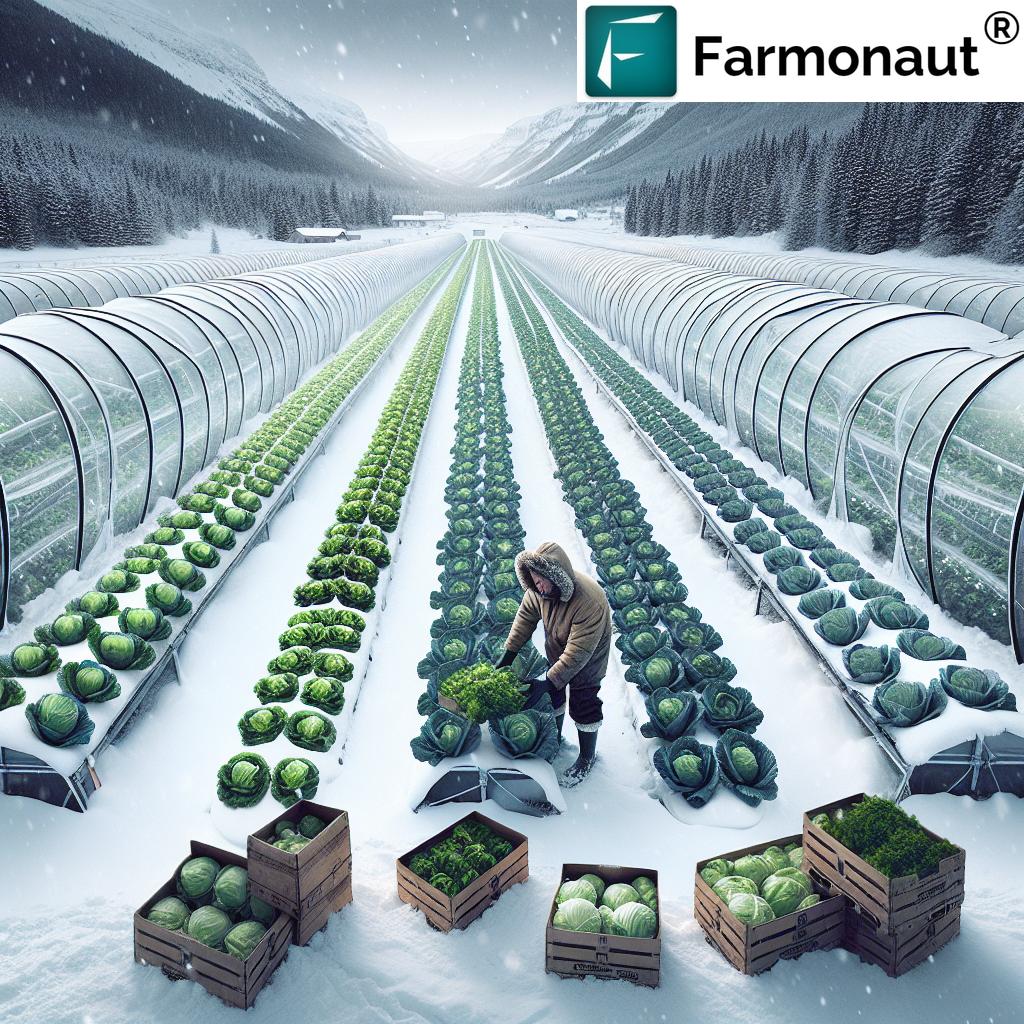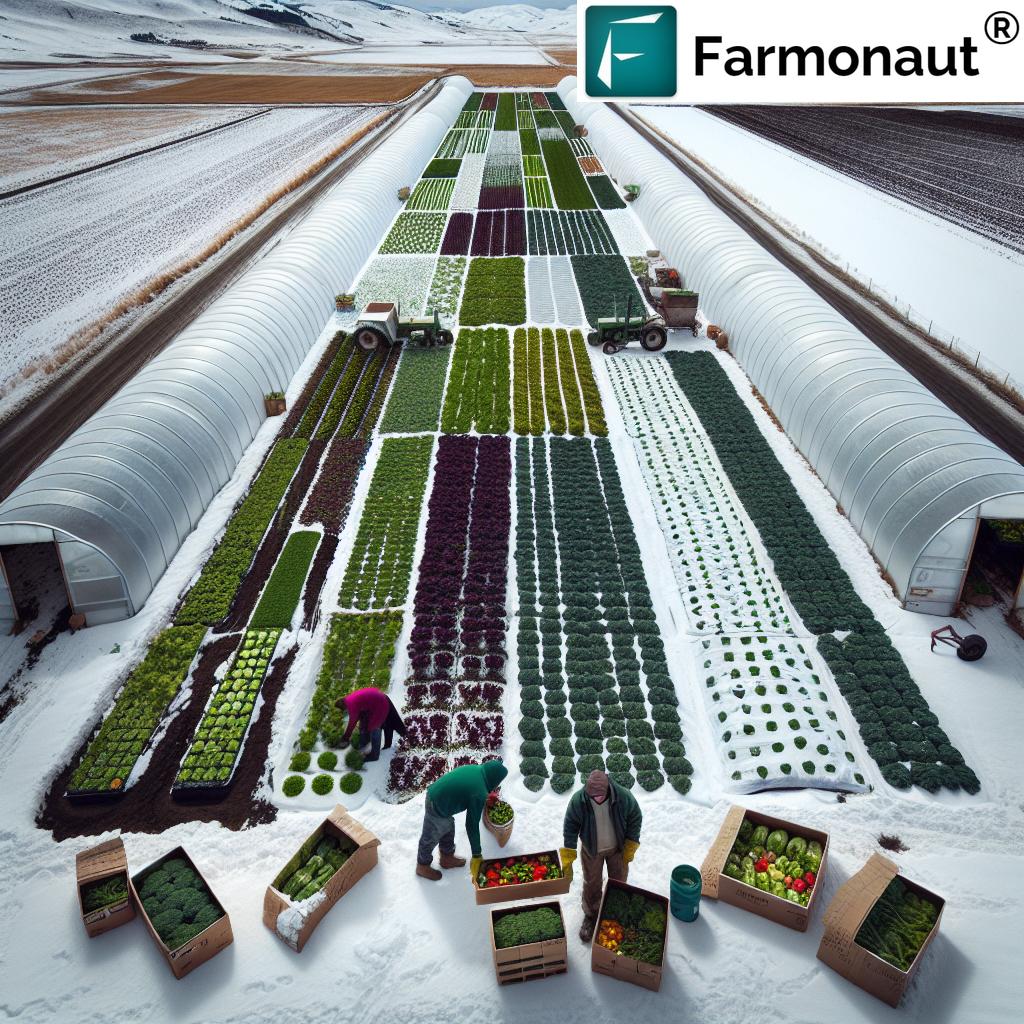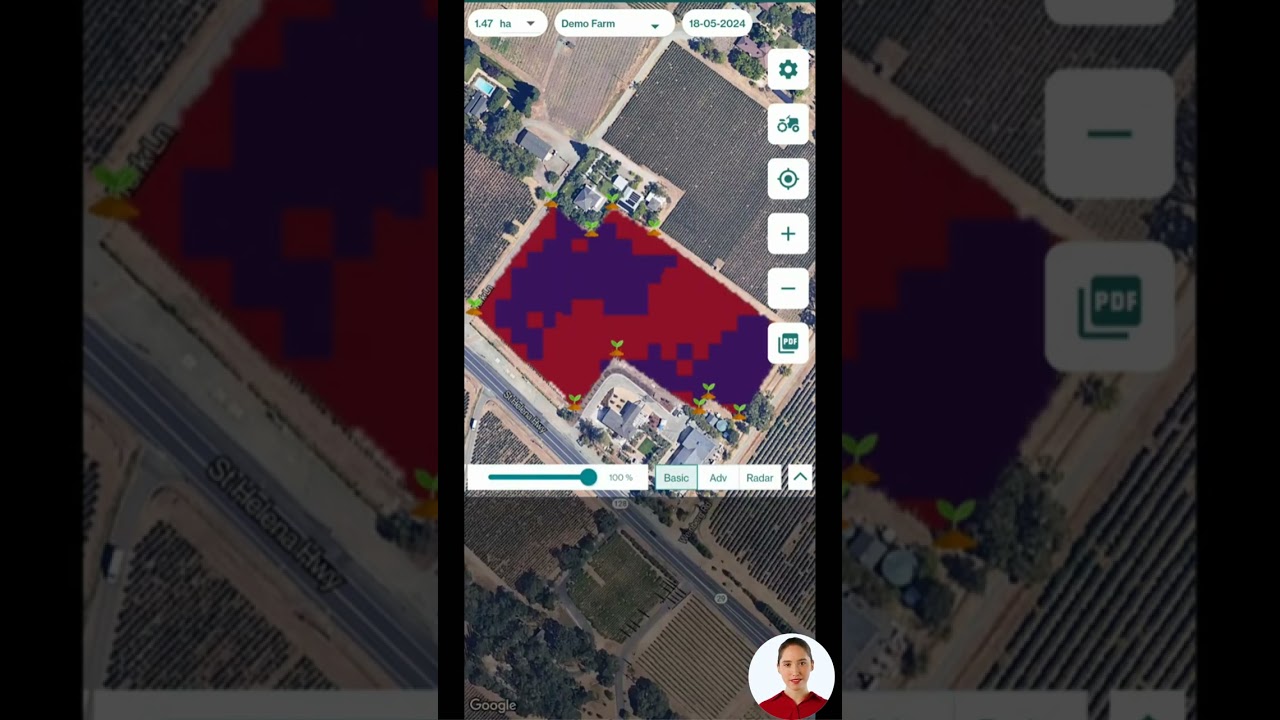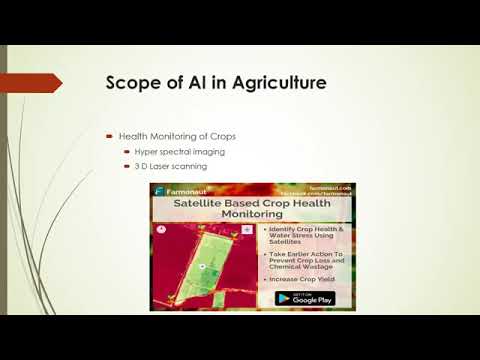Winter Farming Revolution: How Montana’s High Tunnel Techniques Yield Fresh Greens Year-Round
“Montana farmers use unheated high tunnels to grow cold-hardy vegetables, defying temperatures as low as -30°F (-34°C).”
Welcome to our comprehensive exploration of winter vegetable farming in Montana, where innovation meets resilience to create a year-round supply of fresh, local produce. In this blog post, we’ll delve into the revolutionary techniques that are transforming the agricultural landscape of the Treasure State, defying traditional growing seasons and bringing fresh greens to tables even in the depths of winter.
The Challenge of Winter Farming in Montana
Montana’s harsh winters have long been a formidable obstacle for farmers. With temperatures plummeting well below freezing and snow blanketing the fields, conventional wisdom suggests that the growing season should come to a halt. However, a new breed of farmers is challenging this notion, armed with innovative techniques and a determination to provide fresh, healthy produce throughout the year.
At the heart of this revolution are high tunnel techniques, which are redefining what’s possible in winter agriculture. These methods not only extend the growing season but also open up new possibilities for sustainable farming practices in cold climates.
Understanding High Tunnel Farming
High tunnels, also known as hoop houses, are unheated greenhouse-like structures that provide a protected environment for crops. Unlike traditional greenhouses, high tunnels rely on passive solar heating and careful management to create a microclimate suitable for plant growth. Here’s how they work:
- Structure: High tunnels typically consist of a series of metal or PVC hoops covered with a layer of greenhouse plastic.
- Temperature Control: The plastic covering traps heat from the sun during the day, creating a warmer environment for plants.
- Soil Management: The protected environment allows for better soil management, including moisture control and reduced erosion.
- Crop Selection: Farmers choose cold-hardy vegetable varieties that can thrive in cooler temperatures.
These structures are revolutionizing winter farming in Montana by providing a cost-effective solution for year-round vegetable production.

The Winter Kissed Farm Success Story
In Stevensville, Montana, Winter Kissed Farm stands as a testament to the potential of high tunnel farming. Co-owners Max Smith and Katelyn Madden have turned their agricultural vision into a thriving reality, consistently producing fresh leafy greens even during Montana’s deep freeze.
The success of Winter Kissed Farm can be attributed to several factors:
- Soil Quality: The farm benefits from the exceptional soil in their valley, providing a strong foundation for plant growth.
- Innovative Techniques: Drawing from experiences in East Coast farming, the team utilizes unheated high tunnels to cultivate cold-hardy crops.
- Strategic Planting: Careful timing of fall planting minimizes cell damage from freezing temperatures.
- Continuous Monitoring: The farm team closely watches the plants, adding insulation as needed to protect against harsh conditions.
This meticulous approach allows Winter Kissed Farm to offer a variety of fresh greens, including kale, spinach, and bok choy, throughout the winter months.
The Science Behind Winter Vegetable Varieties
Selecting the right vegetable varieties is crucial for successful winter farming. Cold-hardy vegetables have unique adaptations that allow them to survive and even thrive in freezing temperatures. Here’s what makes these plants special:
- Cellular Adaptations: Winter-hardy plants can modify their cell structures to resist ice crystal formation.
- Sugar Concentration: These plants often increase their sugar content, acting as a natural antifreeze.
- Dormancy Mechanisms: Some varieties can enter a state of dormancy during extreme cold, resuming growth when temperatures rise.
By understanding and leveraging these natural adaptations, Montana farmers can cultivate a diverse range of vegetables year-round.
The Role of Technology in Winter Farming
While traditional farming knowledge forms the foundation of winter agriculture, modern technology plays a crucial role in optimizing these practices. Satellite-based crop monitoring systems, like those offered by Farmonaut, provide invaluable insights for farmers engaged in year-round production.
Farmonaut’s advanced technology offers several benefits for winter farmers:
- Real-time Crop Health Monitoring: Satellite imagery provides up-to-date information on vegetation health, helping farmers identify issues early.
- Soil Moisture Analysis: Accurate data on soil moisture levels enables precise irrigation management, crucial in high tunnel environments.
- Weather Forecasting: Access to detailed weather predictions allows farmers to prepare for extreme conditions and protect their crops proactively.
By integrating these technological tools, Montana’s winter farmers can make data-driven decisions to optimize their crop management strategies.
“Year-round farming in Montana increases local vegetable variety by up to 40% during traditional off-seasons.”
Sustainable Winter Agriculture Practices
Winter farming in Montana isn’t just about producing food; it’s about doing so sustainably. The high tunnel techniques employed by farms like Winter Kissed Farm align perfectly with sustainable agriculture principles:
- Reduced Transportation: By providing local produce year-round, these farms significantly reduce the carbon footprint associated with long-distance food transportation.
- Water Conservation: High tunnels allow for more efficient water use through controlled irrigation systems.
- Soil Health: Protected environments in high tunnels prevent soil erosion and allow for year-round soil improvement practices.
- Biodiversity: Growing a variety of crops throughout the year supports local biodiversity and promotes healthier ecosystems.
These sustainable practices not only benefit the environment but also contribute to the long-term viability of Montana’s agricultural sector.

The Economic Impact of Year-Round Vegetable Production
The shift towards year-round vegetable production is having a significant economic impact on Montana’s agricultural community:
- Extended Income Streams: Farmers can generate income throughout the year, improving financial stability.
- Job Creation: Year-round operations require consistent labor, creating more stable employment opportunities in rural areas.
- Local Economy Boost: Money spent on local produce stays within the community, supporting other local businesses.
- Increased Food Security: A consistent local food supply reduces reliance on imports and enhances regional food security.
This economic resilience is particularly valuable in a state known for its harsh winters and traditionally seasonal agricultural economy.
Overcoming Challenges in Winter Farming
While high tunnel techniques have revolutionized winter farming in Montana, challenges remain. Farmers must navigate various obstacles to maintain successful year-round operations:
- Extreme Weather Events: Even with protective structures, severe cold snaps or heavy snow can threaten crops.
- Energy Management: Balancing the need for protection with energy efficiency is an ongoing challenge.
- Pest and Disease Control: The enclosed environment of high tunnels can sometimes exacerbate pest and disease issues.
- Market Education: Educating consumers about the availability and benefits of local winter produce is crucial for sustained demand.
Innovative farmers are continuously adapting their techniques to address these challenges, often with the help of technology and community support.
The Future of Winter Farming in Montana
As we look to the future, the prospects for winter farming in Montana are bright. The success of pioneers like Winter Kissed Farm is inspiring a new generation of farmers to explore year-round production. Here are some trends we anticipate:
- Technological Integration: Increased adoption of smart farming technologies, including AI-driven crop management systems.
- Diversification: Expansion beyond leafy greens to a wider variety of winter-hardy vegetables and fruits.
- Community Supported Agriculture (CSA) Growth: More farms offering winter CSA programs to build direct relationships with consumers.
- Research and Development: Ongoing research into cold-hardy plant varieties and innovative high tunnel designs.
These developments promise to further solidify Montana’s position as a leader in sustainable winter agriculture.
Explore Farmonaut’s API for advanced agricultural insights
Montana Winter Farming Comparison
| Farming Method | Growing Season | Crop Types | Temperature Management | Estimated Yield | Farmonaut Monitoring Benefits |
|---|---|---|---|---|---|
| Traditional Outdoor Farming | May to September | Warm-season crops | Natural climate | Baseline | Basic crop health monitoring, weather alerts |
| High Tunnel Farming | Year-round | Cold-hardy vegetables | Passive solar, additional insulation | 30-50% increase | Advanced vegetation analysis, soil moisture tracking, customized advisories |
Enhancing Winter Farming with Farmonaut’s Technology
Farmonaut’s satellite-based crop monitoring system offers significant advantages for winter farmers in Montana. By leveraging this technology, farmers can:
- Optimize Resource Use: Precise data on crop health and soil conditions allows for more efficient use of water and nutrients.
- Predict and Prevent Issues: Early detection of potential problems enables proactive management, reducing crop losses.
- Plan Effectively: Long-term data trends help in strategic planning for crop rotation and expansion.
Community Impact and Local Food Systems
The rise of winter farming in Montana is having a profound impact on local communities:
- Improved Nutrition: Access to fresh, locally-grown produce year-round enhances community health.
- Educational Opportunities: Farms like Winter Kissed serve as educational hubs, teaching sustainable agriculture practices.
- Strengthened Community Bonds: Winter farmers’ markets and CSA programs create gathering spaces and foster community connections.
- Resilient Local Food Systems: Year-round production increases food security and reduces dependence on distant supply chains.
These benefits underscore the importance of supporting and expanding winter farming initiatives across the state.
The Role of Policy in Supporting Winter Agriculture
As winter farming continues to grow in Montana, supportive policies play a crucial role in its development:
- Grants and Subsidies: Financial support for high tunnel construction and technology adoption.
- Research Funding: Investment in cold-climate agriculture research at state universities.
- Zoning Considerations: Updated regulations to accommodate high tunnel structures in agricultural areas.
- Education Programs: Support for training programs in winter farming techniques and technologies.
These policy initiatives can help accelerate the adoption of winter farming practices across Montana.
Consumer Education and Market Development
For winter farming to thrive, consumer awareness and market demand are essential. Efforts to educate the public about the benefits of locally-grown winter produce include:
- Farm-to-Table Events: Showcasing winter produce in local restaurants and community gatherings.
- School Programs: Introducing children to winter farming through school garden projects and field trips.
- Social Media Campaigns: Utilizing digital platforms to share recipes and information about winter vegetables.
- Cooking Classes: Offering workshops on preparing and preserving winter produce.
These initiatives help create a robust market for winter-grown vegetables, ensuring the long-term viability of this agricultural approach.
Check out Farmonaut’s API Developer Docs for integration options
Environmental Benefits of Winter Farming
Winter farming in Montana offers significant environmental benefits:
- Reduced Carbon Footprint: Locally grown produce requires less transportation, lowering greenhouse gas emissions.
- Soil Conservation: Year-round cultivation protects soil from erosion and maintains its health.
- Water Efficiency: High tunnel techniques often result in more efficient water use compared to traditional field irrigation.
- Biodiversity Support: Extended growing seasons can provide habitats and food sources for local wildlife during winter months.
These environmental advantages align with broader sustainability goals and contribute to the overall ecological health of the region.
Conclusion: A Sustainable Future for Montana Agriculture
The winter farming revolution in Montana, exemplified by farms like Winter Kissed, represents a significant leap forward in sustainable agriculture. By combining traditional farming wisdom with innovative high tunnel techniques and cutting-edge technology, Montana’s farmers are redefining what’s possible in cold-climate agriculture.
This approach not only provides fresh, local produce year-round but also strengthens local economies, enhances food security, and promotes environmental stewardship. As we look to the future, the continued growth and development of winter farming practices promise to play a crucial role in building a more resilient and sustainable food system for Montana and beyond.
The integration of technologies like Farmonaut’s satellite-based crop monitoring system further enhances these efforts, providing farmers with the tools they need to optimize their operations and adapt to changing conditions. As we continue to face challenges related to climate change and food security, the innovations emerging from Montana’s winter farming community offer valuable lessons and inspiration for sustainable agriculture worldwide.
FAQ Section
Q: What types of vegetables can be grown in Montana during winter?
A: Cold-hardy vegetables such as kale, spinach, bok choy, and various salad greens can be successfully grown in winter using high tunnel techniques.
Q: How do high tunnels work in extremely cold temperatures?
A: High tunnels trap heat from the sun during the day, creating a microclimate that’s warmer than the outside temperature. Additional insulation layers can be added for extra protection during severe cold snaps.
Q: Is winter farming in Montana economically viable?
A: Yes, winter farming can be economically viable. It allows farmers to generate income year-round and meet the growing demand for local, fresh produce during traditionally off-seasons.
Q: How does Farmonaut’s technology benefit winter farmers?
A: Farmonaut’s satellite-based crop monitoring provides real-time data on crop health, soil moisture, and weather conditions, helping farmers make informed decisions and optimize their winter growing operations.
Q: Can anyone start winter farming in Montana?
A: While anyone can potentially start winter farming, it requires specific knowledge, equipment (like high tunnels), and careful planning. Prospective winter farmers should research thoroughly and possibly seek training or mentorship from experienced growers.
Earn With Farmonaut: Earn 20% recurring commission with Farmonaut’s affiliate program by sharing your promo code and helping farmers save 10%. Onboard 10 Elite farmers monthly to earn a minimum of $148,000 annually—start now and grow your income!
Learn more about earning with Farmonaut
Farmonaut Subscriptions



















